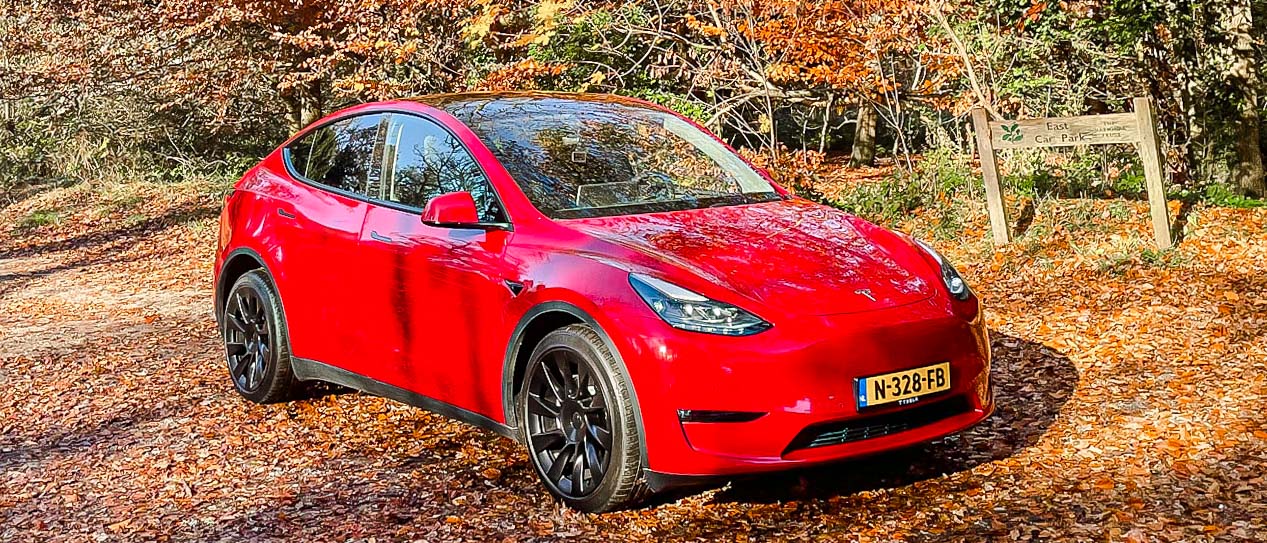Tom's Guide Verdict
It isn’t quite the cheapest Tesla money can buy, but the Model Y is arguably the pick of the bunch. It blends the world-class drivetrain and technology of the Model 3 with a car that is taller, roomier and far more practical, thanks to a larger trunk and optional seven-seat layout.
Pros
- +
Excellent range
- +
Fast and faultless Supercharger network
- +
More trunk space than a Model 3
- +
Best phone app of any manufacturer
Cons
- -
Firm ride
- -
No Apple CarPlay or Android Auto
- -
Autopilot can still feel experimental at times
Why you can trust Tom's Guide
Release date: Available Now
Price: From $52,990; as tested
Power: Dual Motor AWD
Horsepower: 480hp
Battery Range: Up to 330 miles (EPA)
Charging speed: up to 250kW
Top Speed: 155mph
0-60: 3.5 seconds
Smarts: Autopilot, Optional FSD upgrade, Tesla premium connectivity
When Elon Musk revealed the Model Y back in 2019, he claimed that not only would it likely become the best-selling Tesla ever, but he expected it to out-sell all other models combined. That may not have happened just yet, but as anyone who lives in a major U.S. or European city can already attest, Tesla’s compact SUV is incredibly popular.
As a quick recap, the Model Y is broadly to the Tesla Model 3 what the Model X is to the Model S – minus the X’s dramatic falcon-wing doors. Being an all-electric crossover with compact SUV dimensions, the Model Y strikes at the heart of the 2022 auto industry zeitgeist like a SpaceX rocket nailing the landing. It is, on paper at least, exactly what many millions of motorists are clamoring for.
But does the latest Tesla deliver on that promise? Read our full Tesla Model Y review to find out.
Tesla Model Y: Price and availability
Tesla’s prices tend to change as quickly as its cars accelerate, so you may well find the figures quoted here, in May 2022, have changed by the time you read this review. Tesla also has a habit of quoting its prices after incentives and potential gasoline savings.
I’m going to side-step all of that and stick with the cash price, which for the Model Y Long Range tested here starts at $52,990, and for the Model Y Performance you’re looking at $56,990. There’s also some evidence of a standard range Model Y, with AWD, which looks to have a starting price of $60,990.
Only white and silver paint options are offered for free, with blue, black and red priced at $1,000, $1,500 and $2,000 respectively. Five- and seven-seat interior options are available for the Model Y, with the latter costing an additional $3,000.
Curiously, the seven-seat version isn’t available in some markets, including the U.K. where our drive of the car took place. Also omitted from U.K. versions of Model Y is a rear parcel shelf, so everything left in the trunk can be seen through the rear windshield. We don’t know why, and neither did the Tesla representative we asked.
Get instant access to breaking news, the hottest reviews, great deals and helpful tips.
Tesla Model Y: Design
There’s no mistaking the Tesla genes in the Model Y’s exterior design. To my eyes it’s a bluff, fish-like face only Musk could love, with an awkwardly tall glasshouse and an overall aesthetic that feels too generic, conservative – and, frankly, boring – for a car as impressive as the Model Y. But that is entirely subjective and I shan’t dwell on something that can’t be seen from behind the wheel.
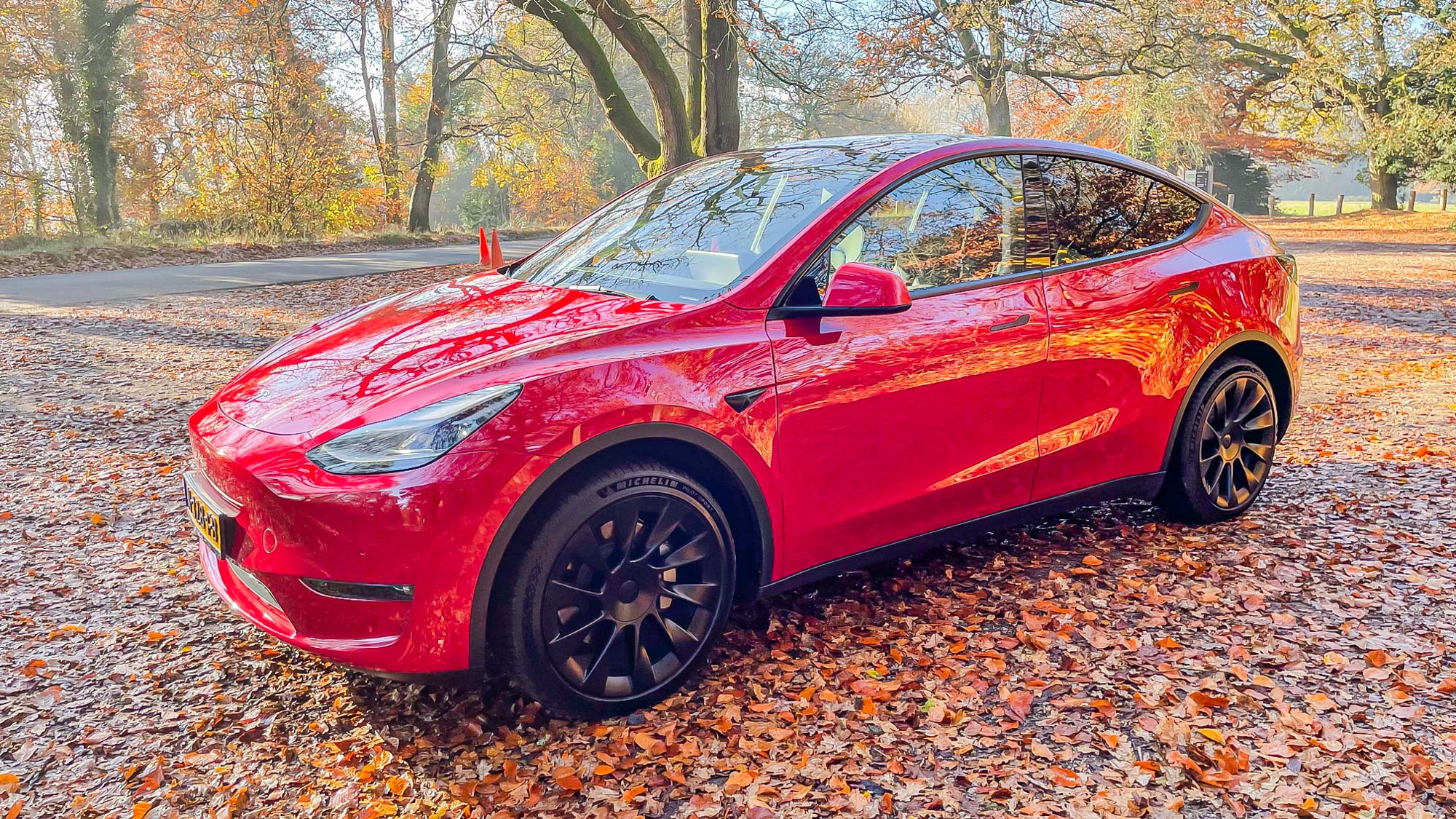
The Model Y continues a trend previously seen on the Model 3, where exterior details like the flush door handles and window frames are now black instead of chrome. Setting the Model Y apart is how the rear trunk hinges from further forward along the roofline than it does on the Model 3, creating a far larger opening to a much bigger load space.
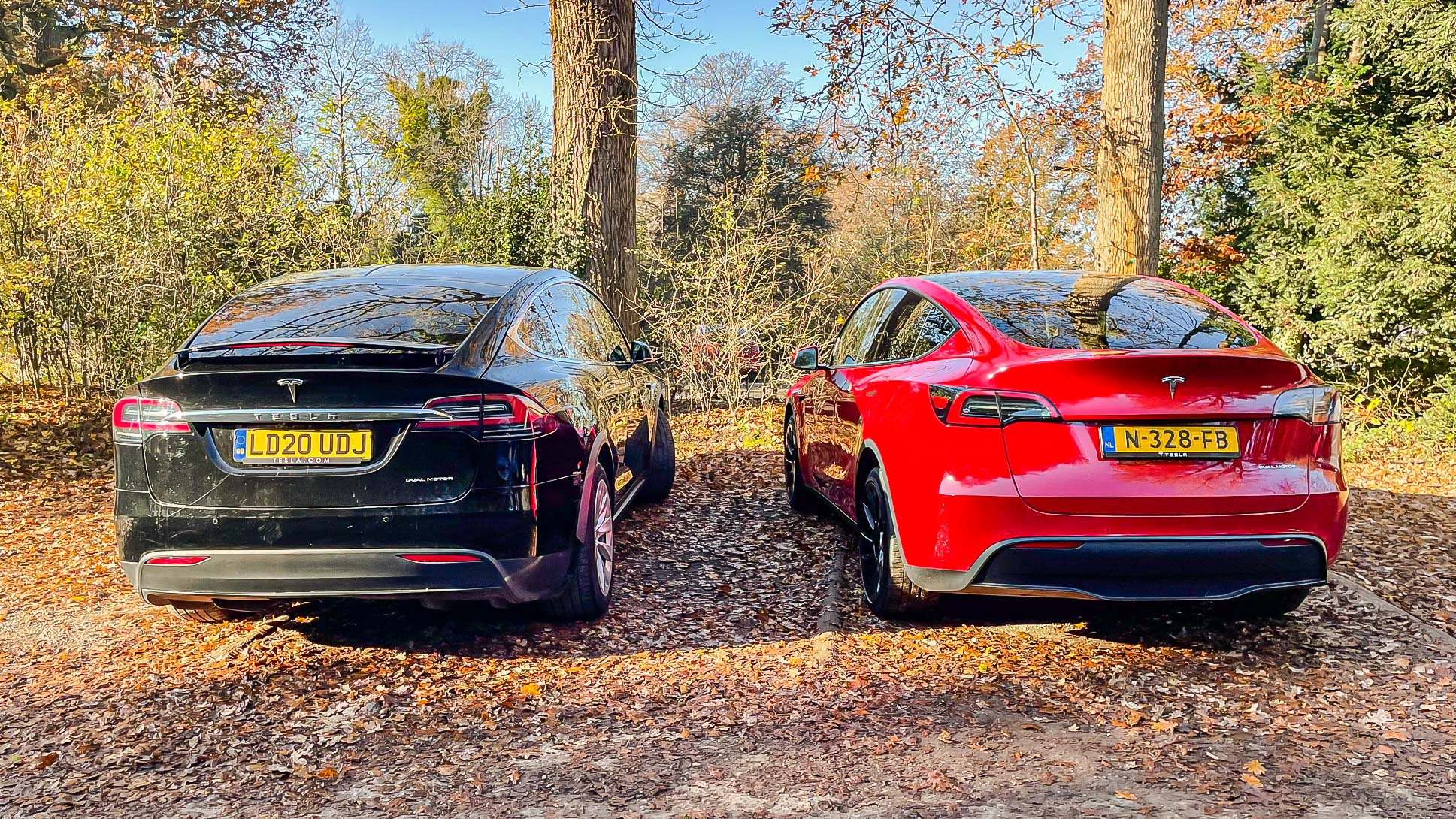
Despite sharing the same general appearance, the Model Y sits higher than the Model 3, both in terms of its ride height, but also owing to the taller cabin and higher roof. It’s less attractive than the Model 3, but has a far more practical design. For young families tasked with loading children into the rear seats and strollers into the trunk, it’s a revelation.
Tesla Model Y: Interior design and features
Tesla has sensibly carried a lot of the Model 3’s interior over to the Model Y, as it did with the S and X a few years earlier. The 3’s centrally-mounted touch screen is here, and that’s the only display you’ll find inside the vehicle — due to there being no traditional instrument binnacle behind the steering wheel.
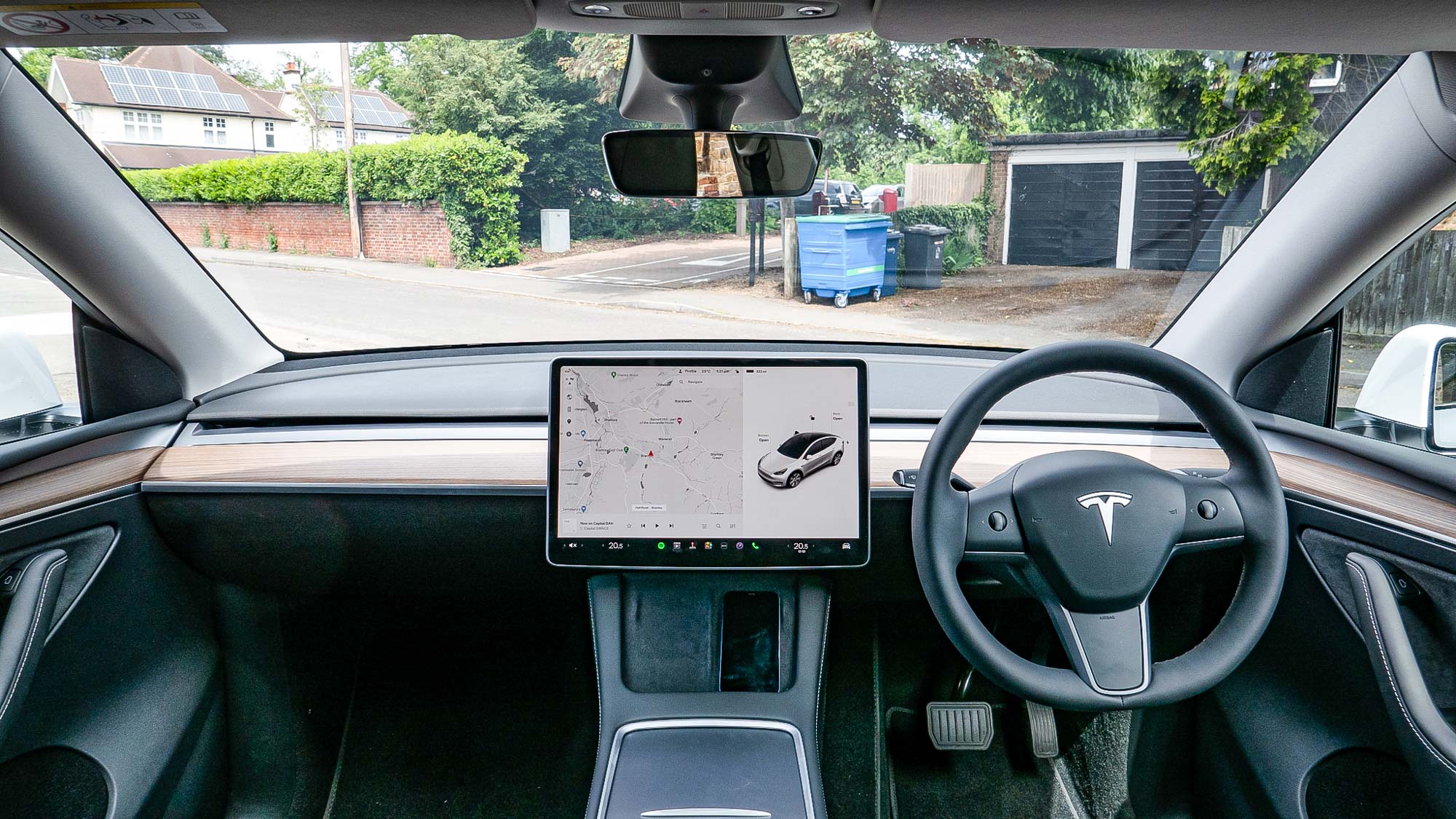
This is mostly fine, but if we have to go without any sort of gauge cluster I wish Tesla would instead fit its cars with a heads-up display. It wouldn’t cost much, could be sunk into the dashboard, and would make it far less distracting to see your speed and the next navigation instruction. As it is, the Model Y driver needs to take their eyes off the road and glance to the upper-corner of the central display to see all that information.
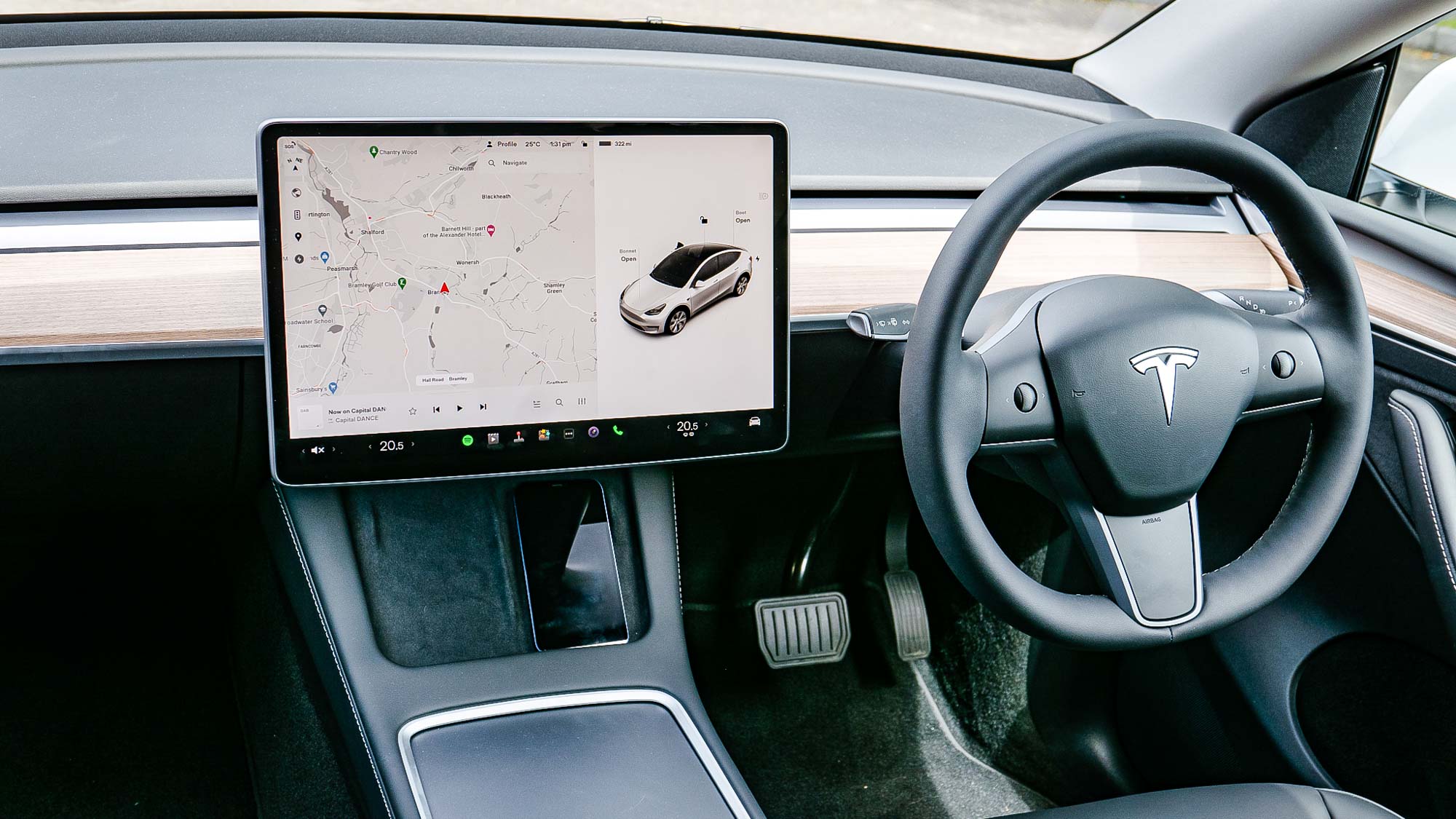
The lack of a conventional stalk for the windshield wipers is also a problem. Since the automatic wipers (which use the cameras of the Autopilot system to function) aren’t entirely reliable.

So your vision is already obscured before you second-guess the system. You then need to press a button on the turn signal stalk to open the wiper menu, and tap at the touchscreen to pick the speed you want.
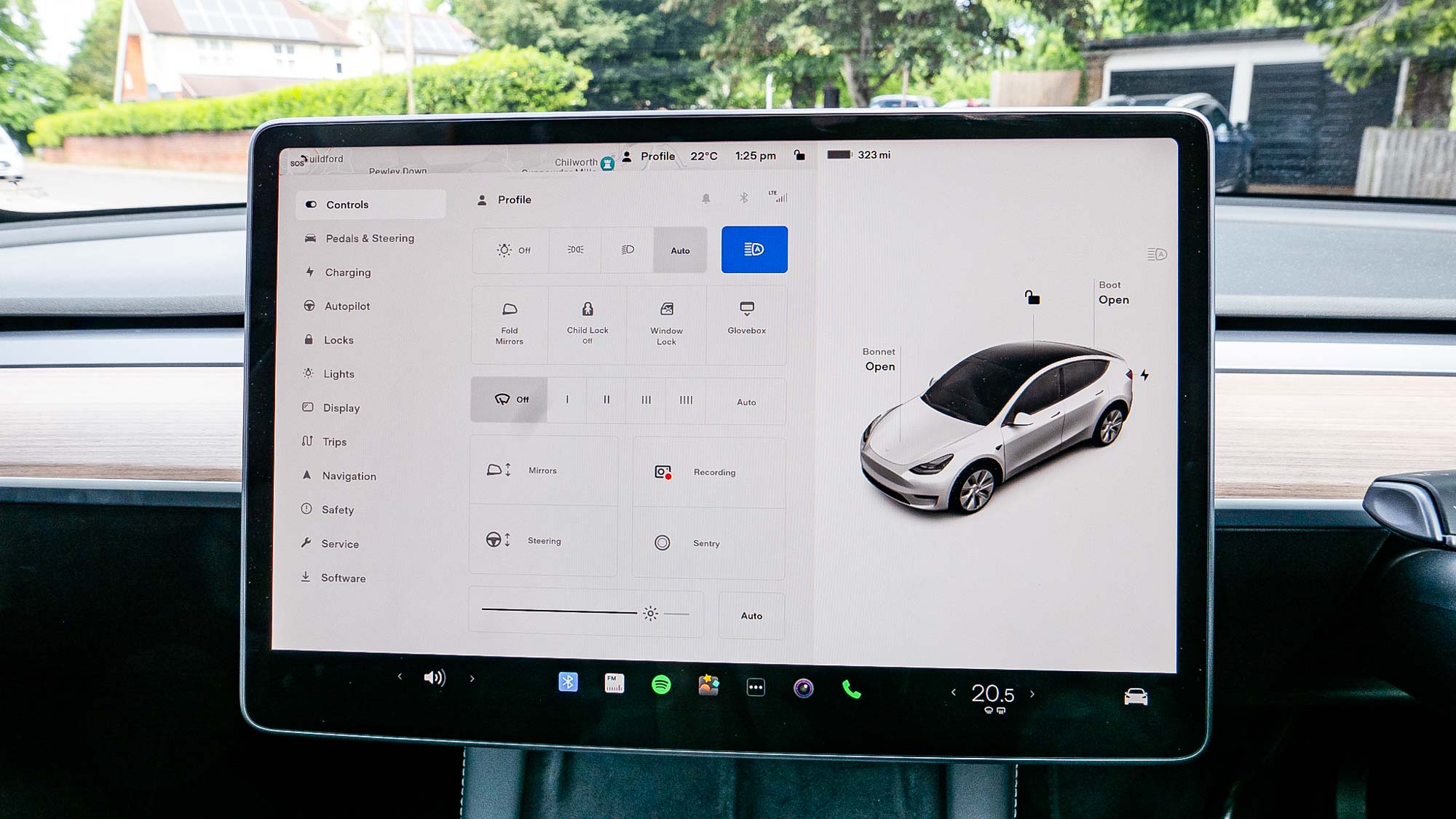
It’s a classic example of Tesla overengineering a solution to a problem that didn’t exist in the first place.
Aside from the many, many menus, the operating system includes YouTube and Netflix, for being entertained while parked at a charger, along with a digital sketching app, a karaoke machine and, yes, ‘fart mode’, which lets one rip when you tap the display or operate the turn signal. You can even pick which of your children to blame it on, and the sound will come from the speakers nearest them. It’s daft and pointless, but I challenge you not to smile at least once.


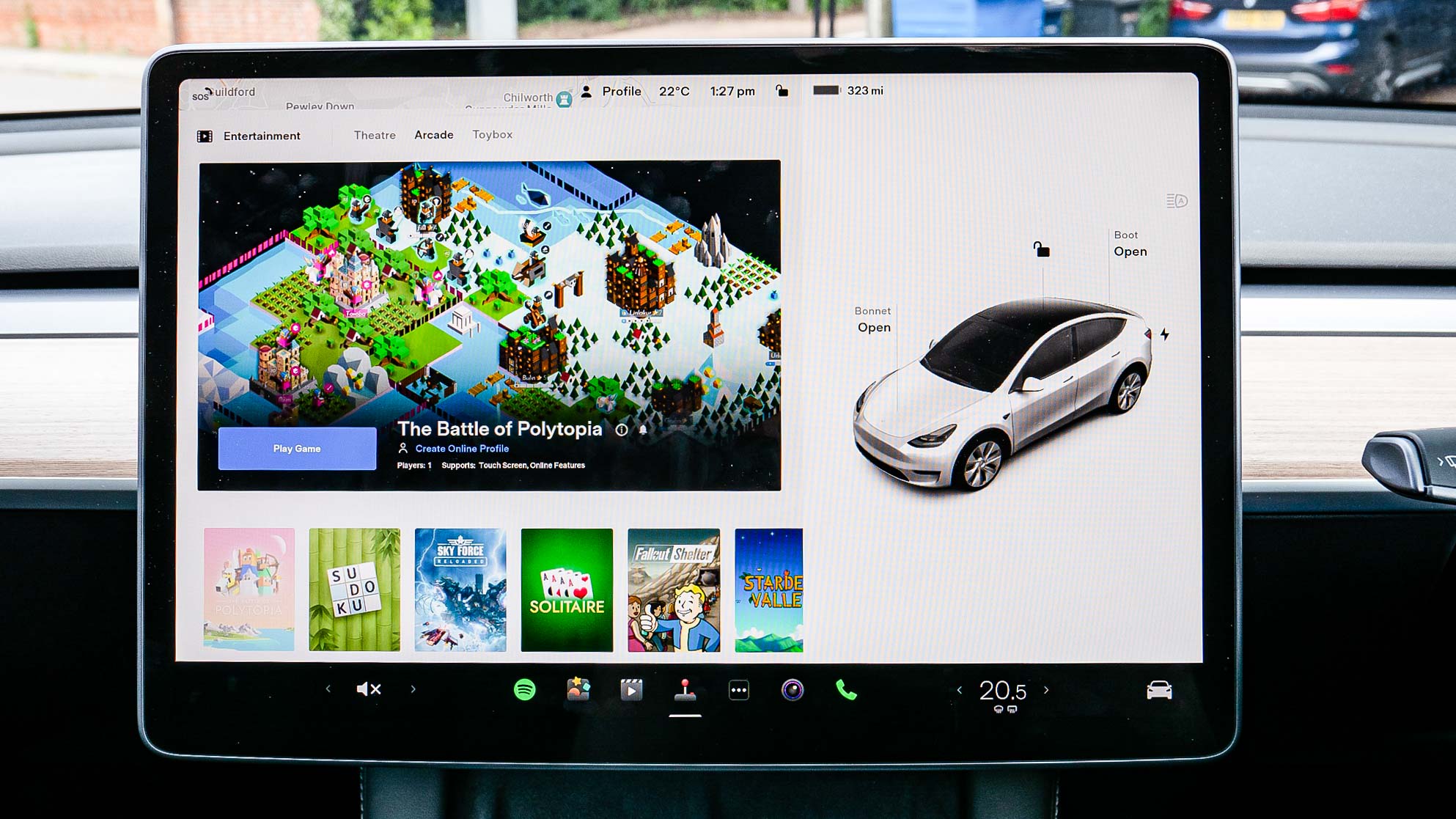
There are games too, with Beach Buggy Racing 2 letting you control your virtual vehicle with the actual car’s steering wheel and brake pedal. It’s huge fun, but everyone in the parking lot is going to think you’re crazy, sawing away at the wheel of a parked car.
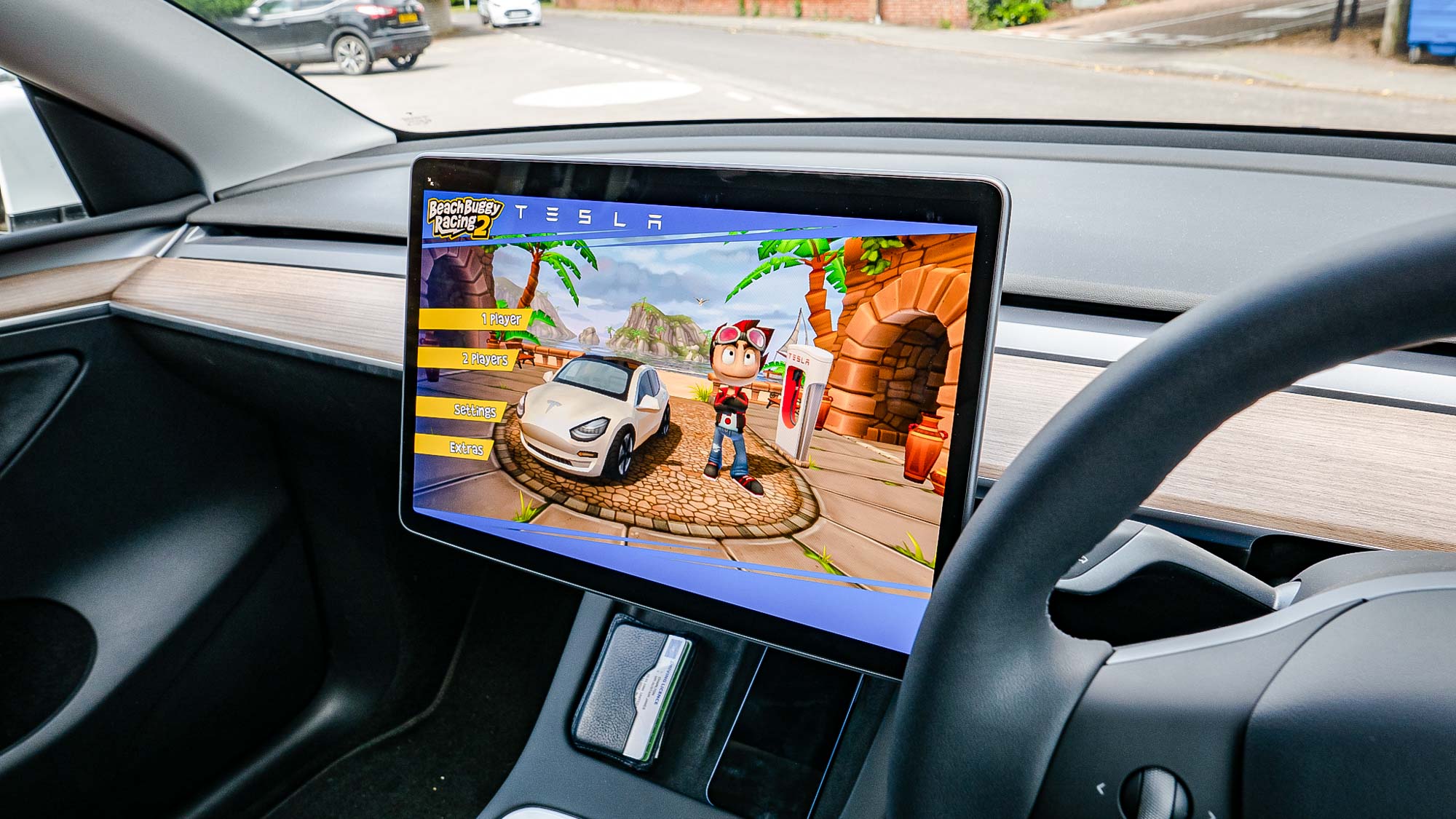
Other uniquely-Tesla details include how the steering wheel position is adjusted by entering a touch screen sub-menu, then rotating a pair of scroll wheels with your thumbs, and while the direction of the air conditioning also requires a quick dive into the operating system.

It all works well for now, but I worry how hideously expensive fixing any of this could be in years to come. So too the electric, button-press door releases and touch screen-controlled glove box.
The minimal nature of the Model Y’s cabin gives the interior a real sense of space, while also no doubt helping to cut design and manufacturing costs. After all, the more symmetrical the interior, the less to change when switching the steering wheel from one side to the other.
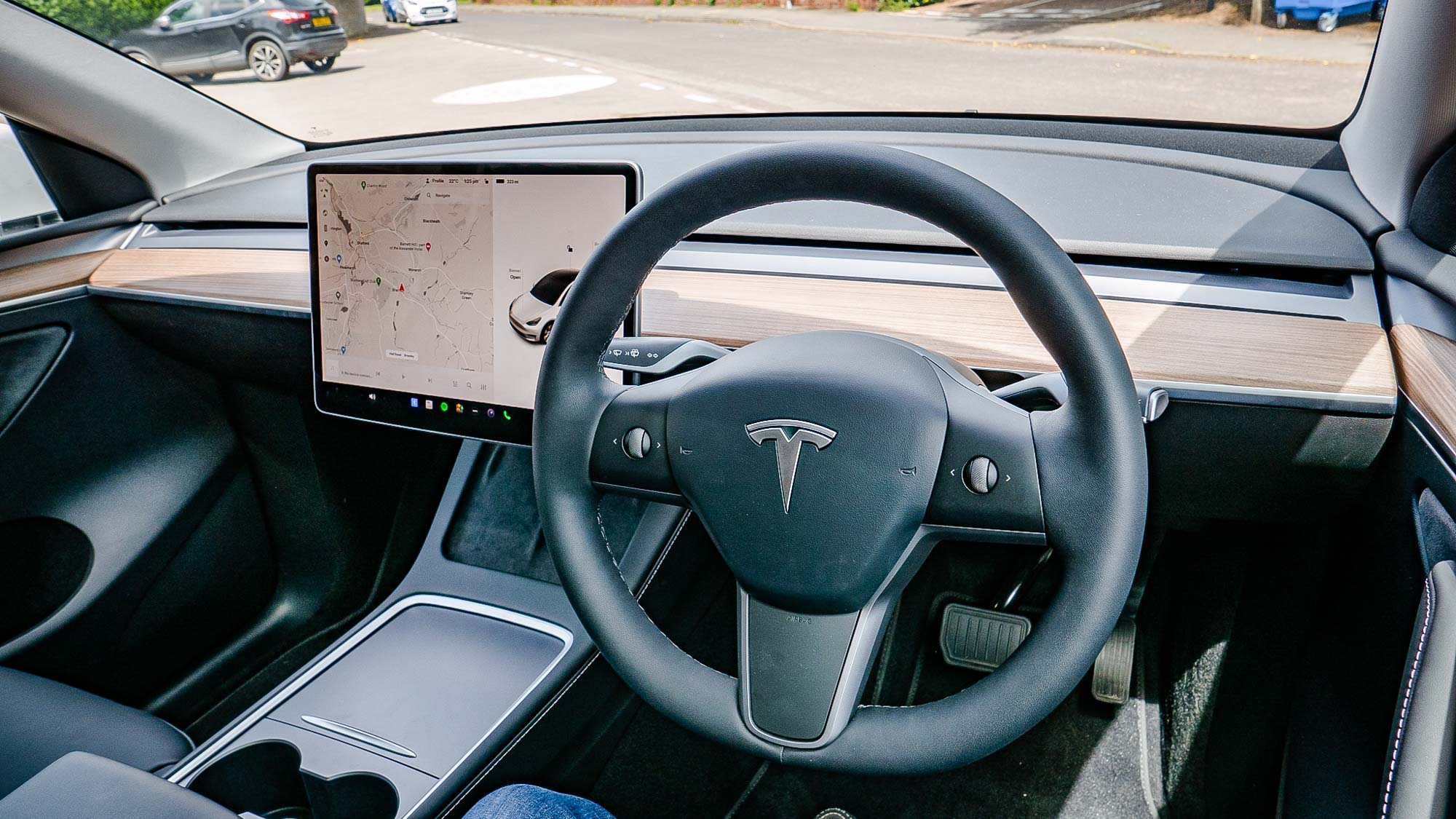
The all-vegan interior with synthetic leather, used for the seats and steering wheel, broadly looks and feels like the real thing — and is available in either black or white. For the sake of future cleaning bills you’ll surely want to opt for the former.

Wireless smartphone charging is included as standard, with a pair of charge pads located below the touch screen. It’s a nice use of otherwise dead space, but I don’t think the driver should be encouraged to place their phone where every distracting notification can be seen. I’d much rather hide my phone in a storage bin and connect via Apple CarPlay or Android Auto, but sadly neither is currently offered in any Tesla.
Speaking of storage, there’s a good amount of space beneath the central armrest, a pair of drinks holders ahead of you and a second storage bin covered by a hinged lid.
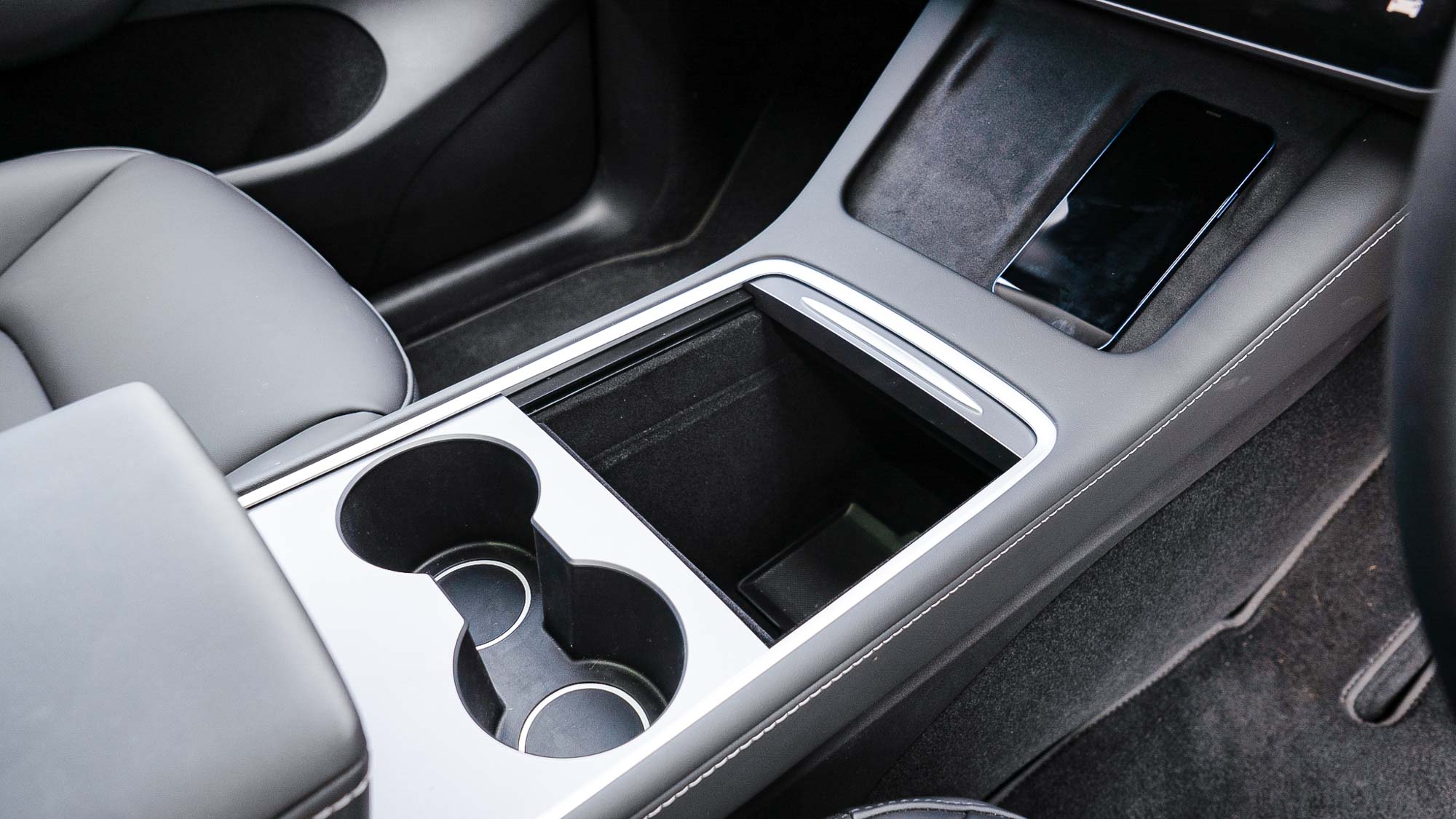
So far, so very familiar. But where the Model Y’s interior impresses over the Model 3 is when you get into the back seats. Even when sitting behind a taller driver, there’s loads of room for equally-tall rear occupants thanks to the extra height of the Y. Where the Model 3 can feel cramped in the back, the Y is nothing of the sort, and the interior is bathed in light flooding through the standard-fit panoramic glass roof.
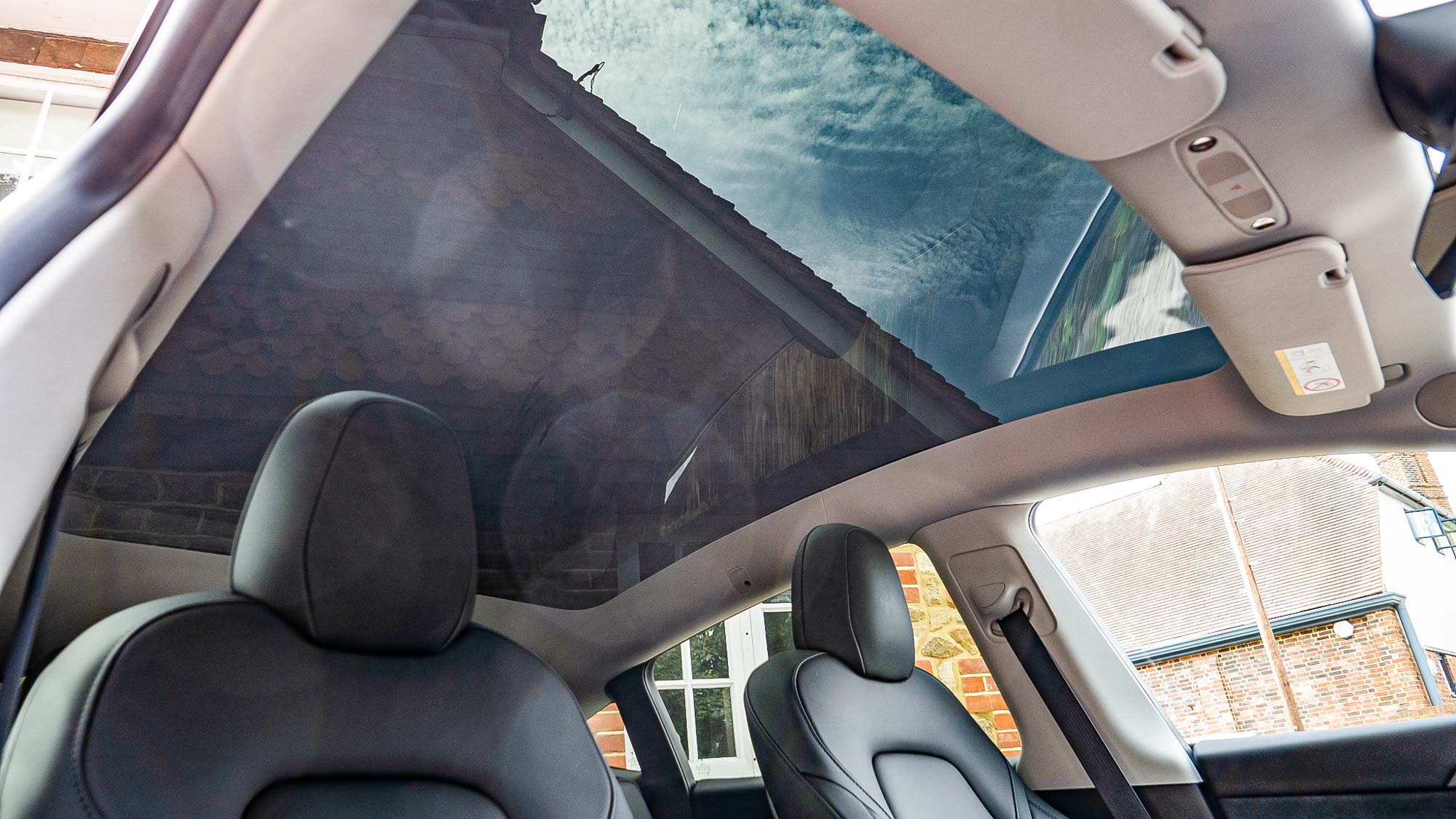
Rear passengers get access to a pair of USB-C charge ports, and so too do those on the third row if that’s the configuration of Model Y you go for. The second and optional third row all fold flat, with electronic release switches in the trunk making it easy to lower the seats on your next trip to Ikea.
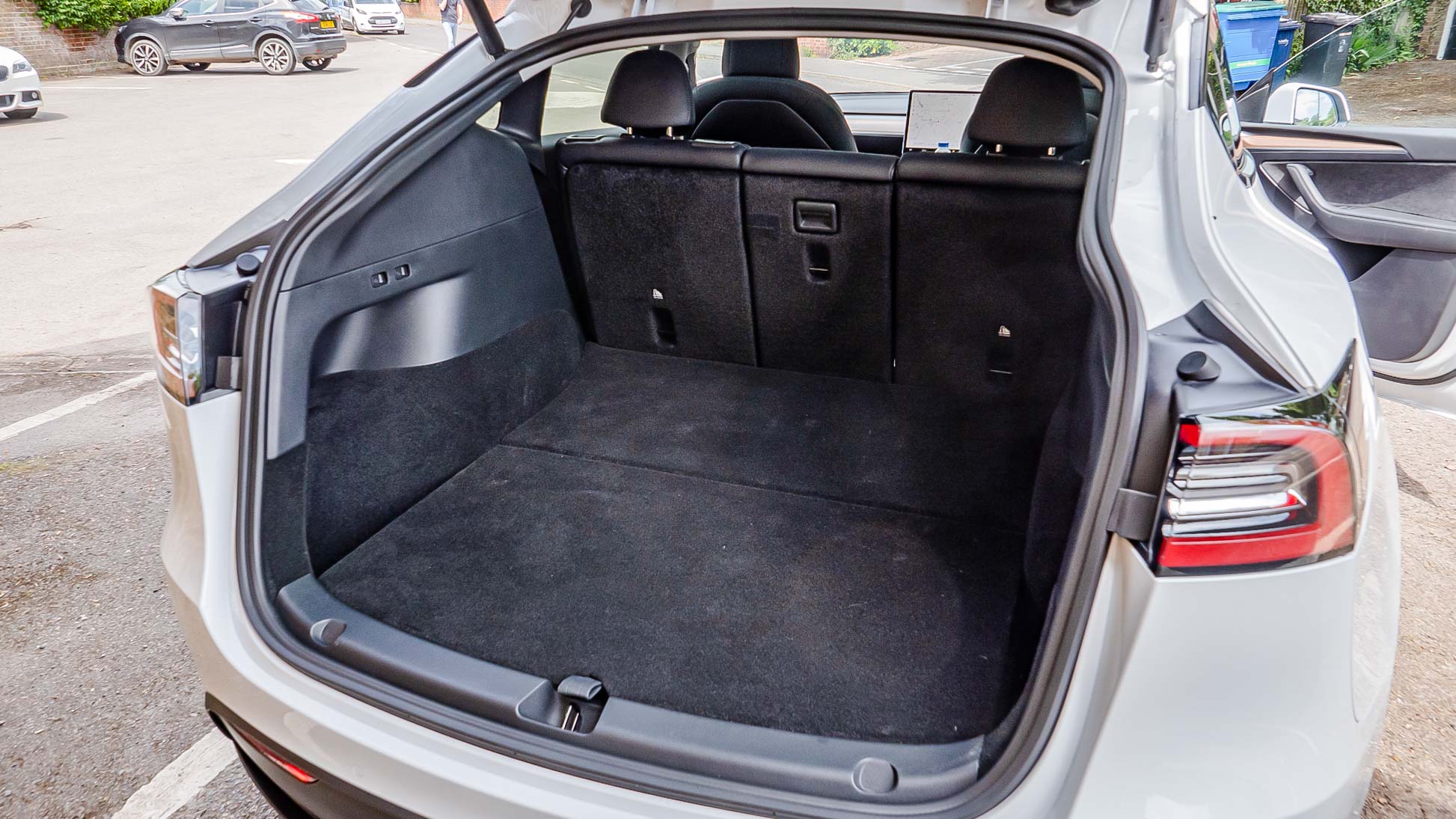
Many electric cars have a front trunk, or frunk, owing to their lack of engine, but Tesla is the best at maximizing that space for extra storage. The Model Y’s frunk is just over four cubic feet, which is comfortably more than the Ford Mustang Mach-E, and around double that of the Kia EV6 and Hyundai Ioniq 5.
Tesla Model Y: Driving and performance
Teslas have always been quick cars and the Model Y is no exception. Both variants have a motor on each axle for all-wheel-drive, for that added performance. The slower and cheaper Long Range model has 0-60 mph time of 4.8 seconds and a top speed of 135 mph. Go for the Model Y Performance and the name is justified, with 60 mph dispatched in a supercar-bothering 3.5 seconds, while top speed is 155 mph.
I drove the former and, while it isn’t quite the rollercoaster ride of the Performance, it’s still incredibly quick for what is, by all other metrics, a sensible and practical family car. Like other EVs, acceleration is served up on a mountain of torque from zero rpm, pinning you into the seat and never failing to produce a smile.
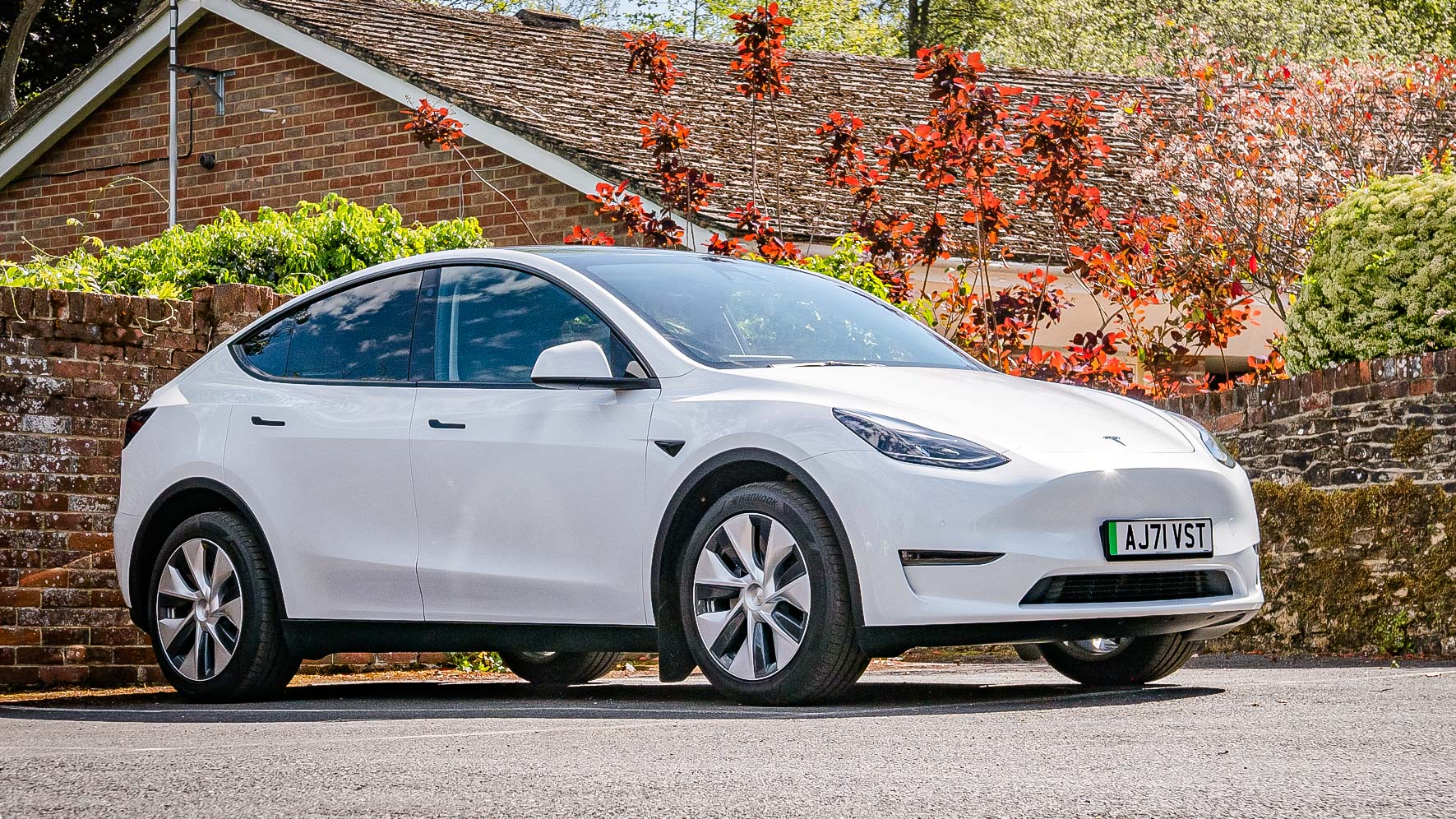
Like other Teslas, it’s the silent ease with which the Model Y sprints away from stop lights and overtakes slower traffic that never fails to impress.
The regenerative braking offers a one-pedal driving system, so lifting off the accelerator uses the motors to slow the car — feeding kinetic energy back into the battery. That feels familiar to anyone who has driven a Tesla, or any other modern electric vehicle. The strength of the regen can’t be adjusted as it can on many other EVs, but Tesla’s calibration is among the very best. It takes just a few miles to master one-pedal driving, and you seldom have to use the actual brakes.
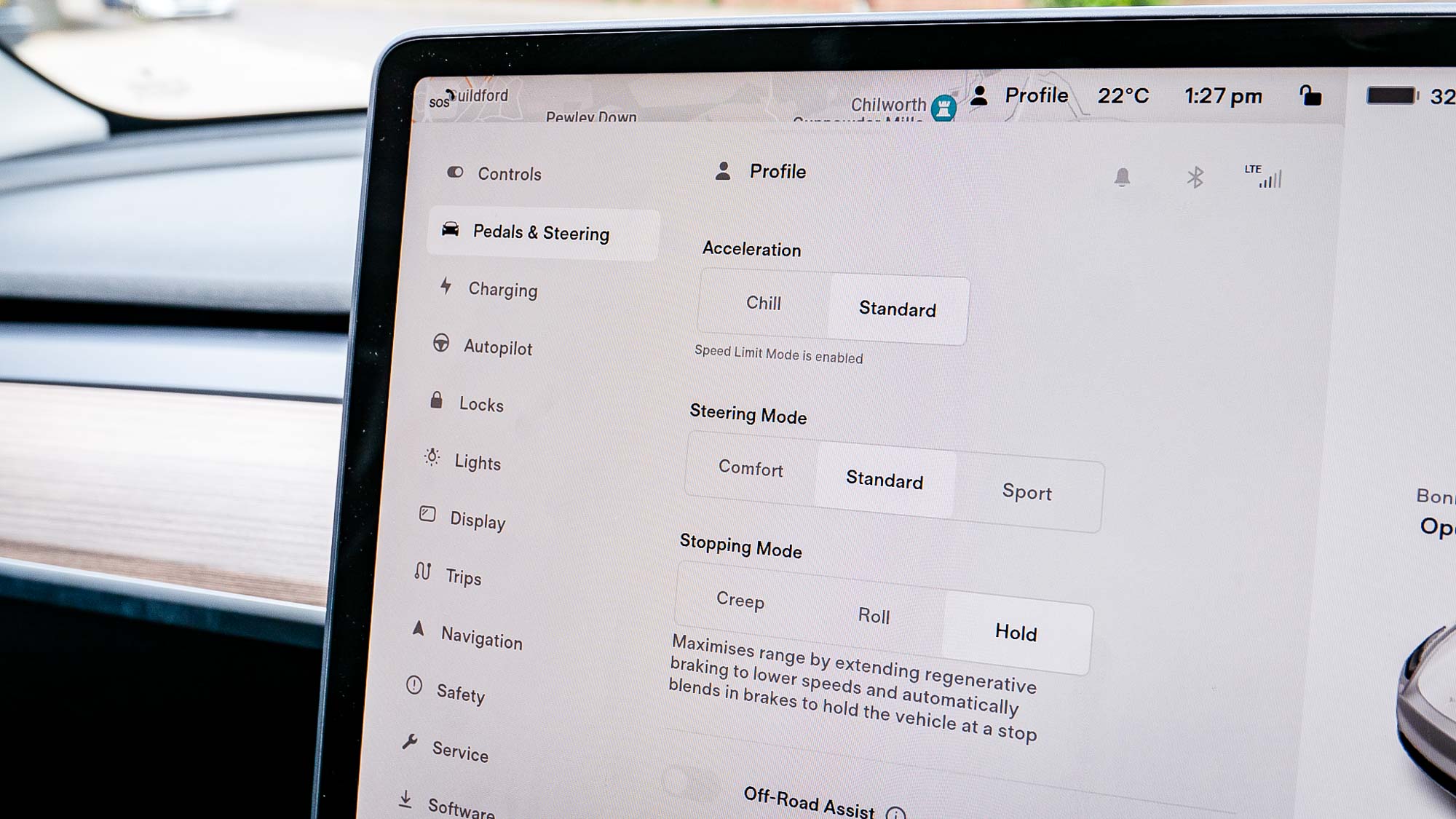
If the Model Y’s straight-line performance encourages you to hustle it along a winding country road, then you’ll find a car that is stiffly sprung with good body control and minimal roll. That’s hardly a surprise given the heaviest component, the battery pack, is in the floor, pulling the center of gravity down with it. However, this stiffness leads to a firm and sometimes fidgety ride when driven more sedately.

I suspect, in a bid to mask the extra weight and slightly higher center of gravity compared to the Model 3, Tesla has simply turned up the damping. This might not be an issue on a smooth French autoroute, but on the more challenging road surfaces of the U.K. (and, I would suspect, the U.S. too) the ride quality suffers. It’s really quite firm for a compact SUV with no sporting credentials, party-trick acceleration aside.
Tesla Model Y: Range and charging
Almost a decade since construction on the Supercharger network began, this remains the primary reason to buy a Tesla. And what a reason it is. Compared to the misery of most public charging networks, the Supercharger system is a revelation. To borrow Apple’s old slogan, it just works.
And, much like the tight integration between Apple hardware, software and services, Tesla cars communicate perfectly with the Supercharger network. Enter a destination in the navigation system and, if the car thinks it will need to charge on the way, you’ll be shown which Supercharger stations to stop at, and for exactly how long. It’ll also show how much charge you’ll have left at each stop and your final destination.
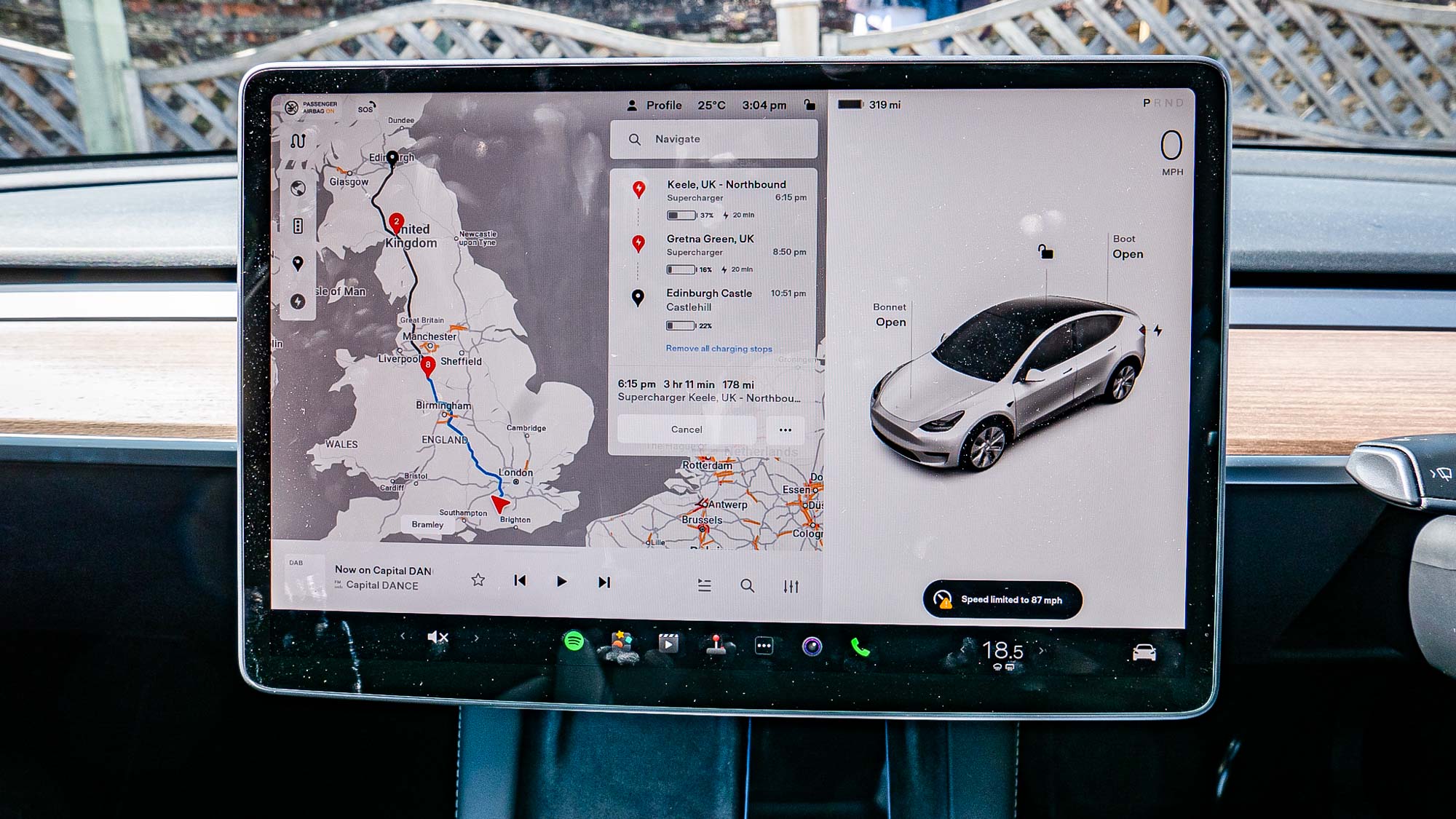
The car then pre-conditions its battery as you approach each Supercharger station, getting it to the optimum temperature for the fastest-possible top-up. Simply stop, plug in, and charging begins. No app, no credit card, no contactless fob. Once topped up, just unplug, drive away, and your Tesla account will be billed accordingly. It is the perfect EV charging solution.
The Model Y has a claimed, ETA-estimated range of 330 miles for the Long Range version, and 303 miles for the Performance. And, like other Tesla cars, these are close to the figures you can expect to achieve in the real world.
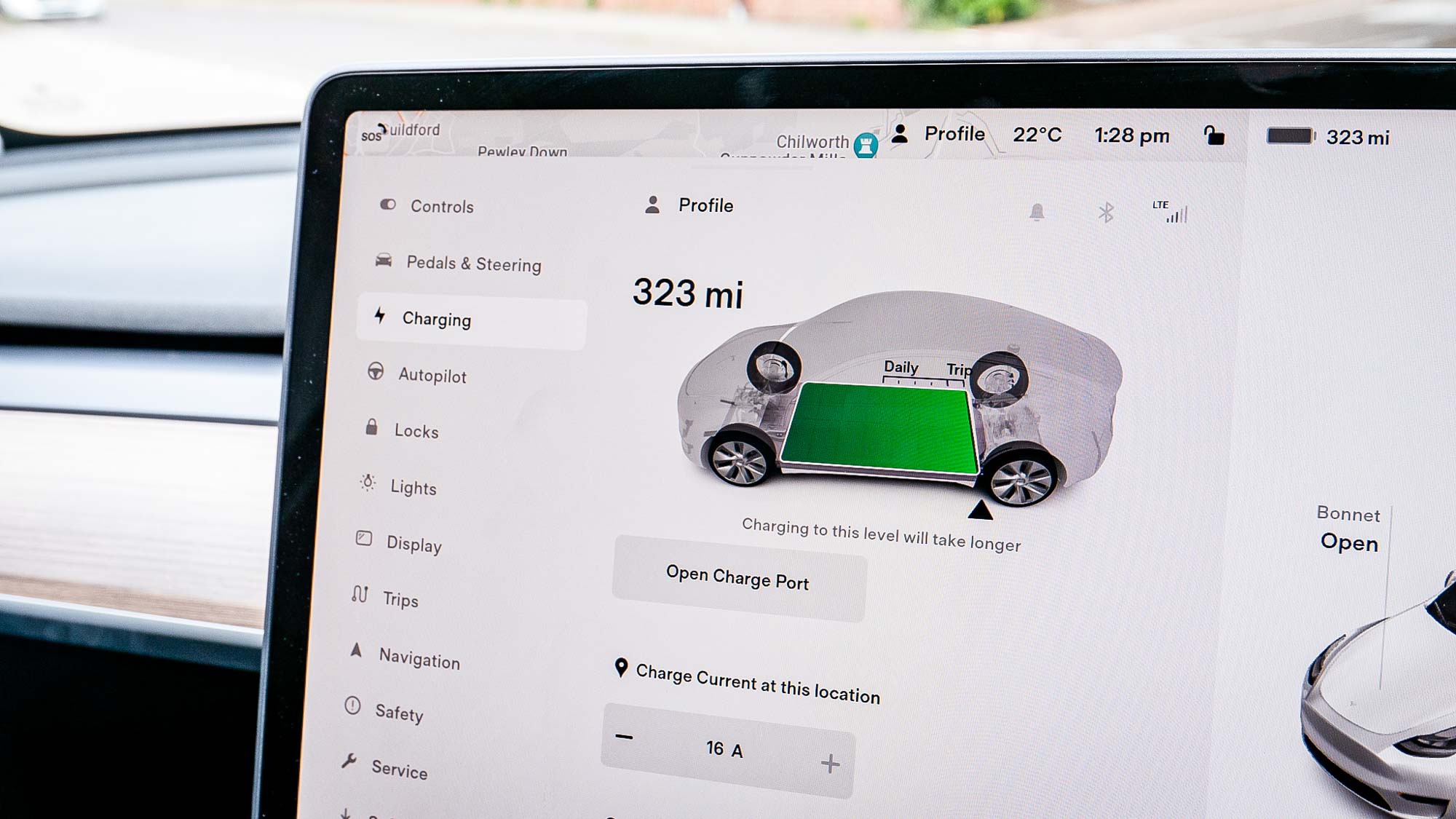
This, paired with charging speeds of up to 250kW from the newest Supercharger stations, is more than enough for almost everyone. Thanks to the navigation system and charge network, there is simply no range anxiety at all.
Tesla Model Y: Autopilot
Tesla’s driver assistance system – don’t call it autonomous driving – varies slightly between markets. At its simplest, the system is adaptive cruise control with lane-keep assist, keeping you a safe distance from the vehicle ahead and within the lines of your lane.
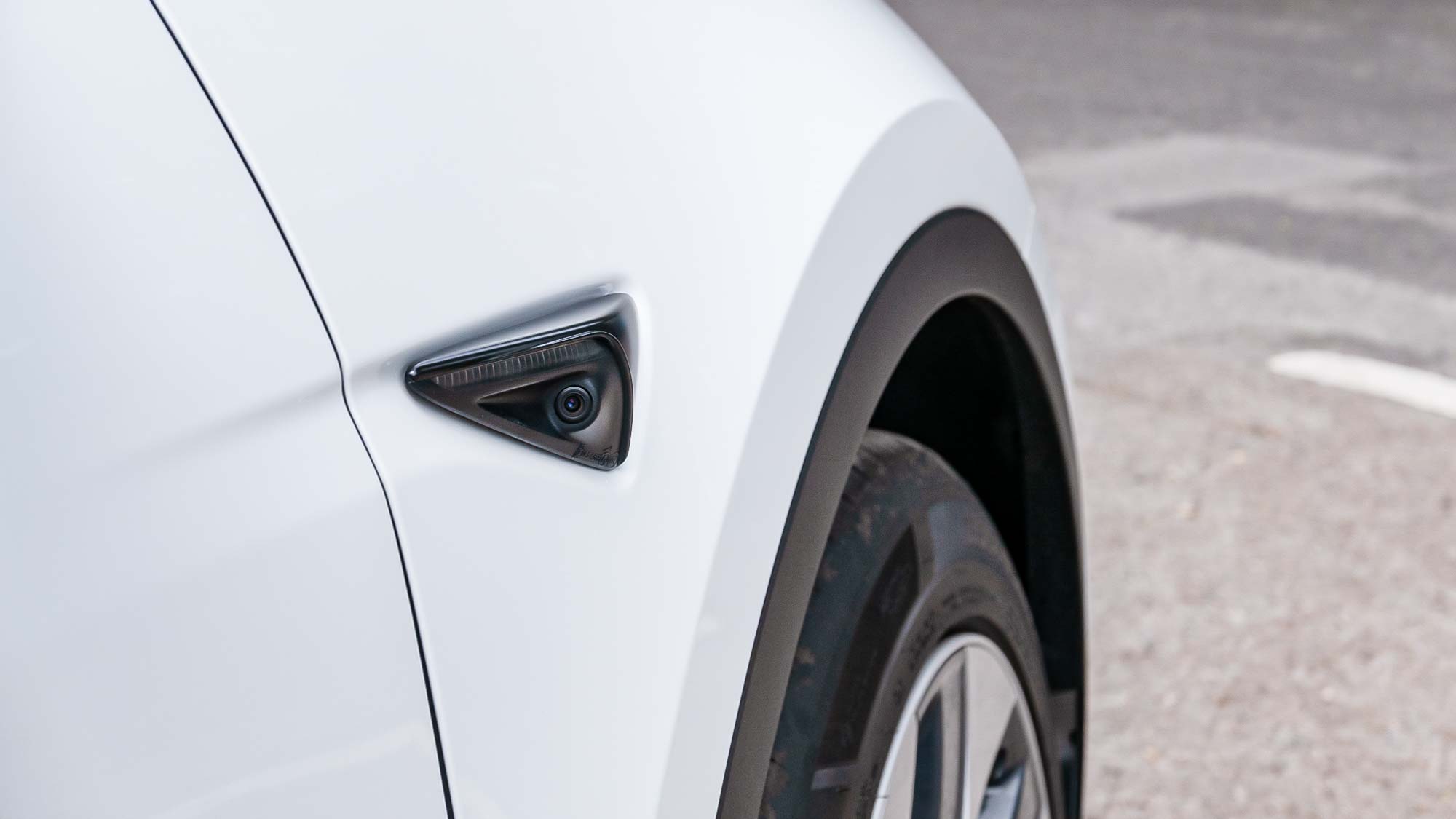

Pay to upgrade, and you get automatic lane changes, self-parking, the ability for the car to follow its own navigation system, and a function called Summon, where it can be maneuvered remotely using the Tesla smartphone app. Handy when blocked in a tight parking space.

I was only able to try Autopilot’s basic functions during my time with the Model Y, and was generally impressed. The technology has improved since I started driving Teslas in 2015, and in recent years I’ve covered hundreds of highway miles without major incident. It does a very good job of staying in lane, even on gently winding highways with faded lane markings, or when heavy rain restricts visibility.
But the jury is still out on when (and if) a fully-autonomous version of Autopilot will be available. Elon Musk once said a Tesla would complete a coast-to-coast drive across the U.S. using Autopilot in 2017 but, half a decade later, this is yet to happen.
Tesla Model Y review: Verdict
It is hard to argue against Musk’s expectation for the Model Y to be Tesla’s best-selling car. It takes everything the Model 3 gets so right – the drivetrain, the technology, the range and the charging network – and fits it all into a package that is slightly larger, taller, and altogether more practical.
In a world obsessed with compact SUVs, the Model Y will be the perfect car for millions of families across the U.S., Europe, China and beyond. It might not be the last word in driving dynamism, and the ride is pretty firm, but buyers of sensible family cars shouldn’t get distracted by these trivialities.
A head-up display and a parcel shelf to cover the trunk are missing, and buyers should be fully aware of precisely what Autopilot can (and, crucially, cannot) do. But otherwise, the Model Y is a very good car indeed. For many, it will be the perfect car.

Alistair Charlton is a freelance automotive and technology journalist based in London. His work has appeared in Forbes, Wired, T3, CAR Magazine, GearBrain and TechRadar, among others. His specialisms include topics ranging from classic cars and men's lifestyle, to smart home technology, phones, electric cars, autonomy, Swiss watches, and much more besides.
